Study on Droplet Size and Velocity Distributions of a Pressure Swirl Atomizer Based on the Maximum Entropy Formalism
Abstract
:1. Introduction
2. Mathematical Formulation
3. Results and Discussion
3.1. Results Validation
3.2. Effect of Liquid Swirling Strength
3.3. Effect of Weber Number
3.4. Effect of Gas-to-Liquid Axial Velocity Ratio
3.5. Effect of Gas-to-Liquid Density Ratio
4. Summary and Conclusions
Acknowledgments
Author Contributions
Conflicts of Interest
References
- Ashgriz, N. Handbook of Atomization and Sprays: Theory and Applications; Springer-Verlag: New York, NY, USA, 2011. [Google Scholar]
- Crow, E.L.; Shimizu, K. Lognormal Distributions: Theory and Applications; Marcel Dekker: New York, NY, USA, 1988. [Google Scholar]
- Mugele, R.A.; Evans, H.D. Droplet size distributions in sprays. Ind. Eng. Chem. 1951, 43, 1317–1324. [Google Scholar]
- Tate, R.W.; Marshall, W.R., Jr. Atomization by centrifugal pressure nozzles. Chem. Eng. Prog. 1953, 49, 169–174. [Google Scholar]
- Rosin, P.; Rammler, E. The laws governing the fineness of powdered coal. J. Inst. Fuel. 1933, 7, 29–36. [Google Scholar]
- Nukiyama, S.; Tanasawa, Y. Experiments on the atomization of liquids in an air stream reports 3: On the droplet-size distribution in an atomized jet. Trans. Jpn. Soc. Mech. Eng. 1939, 5, 62–67. [Google Scholar]
- Bhatia, J.C.; Dominick, J.; Durst, F. Phase-Doppler-anemometry and the log-hyperbolic distribution applied to liquid sprays. Part. Part. Syst. Charact. 1988, 5, 153–164. [Google Scholar]
- Bhatia, J.C.; Durst, F. Comparative study of some probability distributions applied to liquid sprays. Part. Part. Syst. Charact. 1989, 6, 151–162. [Google Scholar]
- Bhatia, J.C.; Durst, F. Description of sprays using joint hyperbolic distribution in particle size and velocity. Combust. Flame. 1990, 81, 203–218. [Google Scholar]
- Xu, T.H.; Durst, F.; Tropea, C. The three-parameter log-hyperbolic distribution and its application to particle sizing, Proceedings of the Fifth International Conference on Liquid Atomization and Spray Systems (ICLASS), Gaithersburg, MD, USA, 15–18 July 1991.
- Sellens, R.W.; Brzustowski, T.A. A prediction of the drop size distribution in a spray from first principle. Atom. Spray Technol. 1985, 1, 89–102. [Google Scholar]
- Li, X.; Tankin, R.S. Droplet size distribution: A derivation of a Nukiyama-Tanasawa type distribution function. Combust. Sci. Technol. 1987, 56, 65–76. [Google Scholar]
- Mondal, D.; Datta, A.; Sarkar, A. Droplet size and velocity distributions in a spray from a pressure swirl atomizer: Application of maximum entropy formalism. J. Mech. Eng. Sci. 2004, 218, 737–749. [Google Scholar]
- Kim, W.T.; Mitra, S.K.; Li, X.; Prociw, L.A.; Hu, T.C.J. A predictive model for the initial droplet size and velocity distributions in sprays and comparison with experiments. Part. Part. Syst. Charact. 2003, 20, 135–149. [Google Scholar]
- Nath, S.; Datta, A.; Nukhopadhyay, A.; Sen, S.; Tharakan, T.J. Prediction of size and velocity distributions in sprays formed by the breakup of planar liquid sheets using maximum entropy formalism. Atom. Sprays. 2011, 21, 483–501. [Google Scholar]
- Chu, C.C.; Chou, S.F.; Lin, H.I.; Liann, Y.H. An experimental investigation of swirl atomizer sprays. Heat Mass Transf 2008, 45, 11–22. [Google Scholar]
- Siamas, G.A.; Jiang, X.; Wrobel, L.C. Numerical investigation of a perturbed swirling annular two-phase jet. Int. J. Multiph. Flow. 2009, 30, 481–493. [Google Scholar]
- Santangelo, P.E. Experiments and modeling of discharge characteristics in water-mist sprays generated by pressure-swirl atomizers. J. Therm. Sci. 2012, 21, 539–548. [Google Scholar]
- Park, H.; Heister, S.D. Nonlinear simulation of free surfaces and atomization in pressure swirl atomizers. Phys. Fluids. 2006, 18. [Google Scholar] [CrossRef]
- Chryssakis, C.A.; Assanis, D.N.; Lee, J.K.; Nishida, K. Fuel Spray Simulation of High-Pressure Swirl-Injector for DISI Engines and Comparison with Laser Diagnostic Measurements; SAE Technical Paper, No. 2003-01-0007; SAE: Warrendale, PA, USA, 2003. [Google Scholar]
- Cousin, J.; Yoon, S.J.; Dumouchel, C. Coupling of classical linear theory and maximum entropy formalism for prediction of drop size distribution in sprays: Application to pressure-swirl atomizers. Atom. Sprays. 1996, 6, 601–622. [Google Scholar]
- Mondal, D.; Datta, A.; Sarkar, A. Droplet size and velocity distributions in a spray from a pressure swirl atomizer: Application of maximum entropy formalism. J. Mech. Eng. Sci. 2004, 218, 737–749. [Google Scholar]
- Shannon, C.E. A mathematical theory of communications. Bell Labs Tech. J. 1948, 27, 379–423. [Google Scholar]
- Sotolongo-Costa, O.; Rodrigues, A.H.; Rodgers, G.J. Tsallis entropy and the transition to scaling in fragmentation. Entropy 2000, 2, 172–177. [Google Scholar]
- Sotolongo-Costa, O. Scaling in fragmentation phenomena, Proceedings of the 2nd International Conference on Physics and Industrial Development: Bridging the Gap (ICPID-II), Belo Horizonte, Brazil, 7–10 July 1996; pp. 293–297.
- Movahednejad, E.; Ommi, F.; Hosseinalipour, S.M. Prediction of droplet size and velocity distribution in droplet formation region of liquid spray. Entropy 2010, 12, 1484–1498. [Google Scholar]
- Yan, K.; Ning, Z.; Lü, M. Spatial instability analysis of an annular swirling viscous liquid jet. Chin. J. Theor. Appl. Mech. 2012, 44, 687–693. [Google Scholar]
- Yan, K.; Jog, M.A.; Ning, Z. Nonlinear spatial instability of an annular swirling viscous liquid sheet. Acta Mech 2013, 224, 3071–3090. [Google Scholar]
- Sotolongo-Costa, O.; Moreno-Vega, Y.; Lloveras-González, J.J.; Antoranz, J.C. Criticallity in droplet fragmentation. Phys. Rev. Lett. 1996, 76, 42–46. [Google Scholar]
- Ishii, T.; Matsusita, M. Fragmentation of long thin glass rods. J. Phys. Soc. Jpn. 1992, 61, 3474–3477. [Google Scholar]

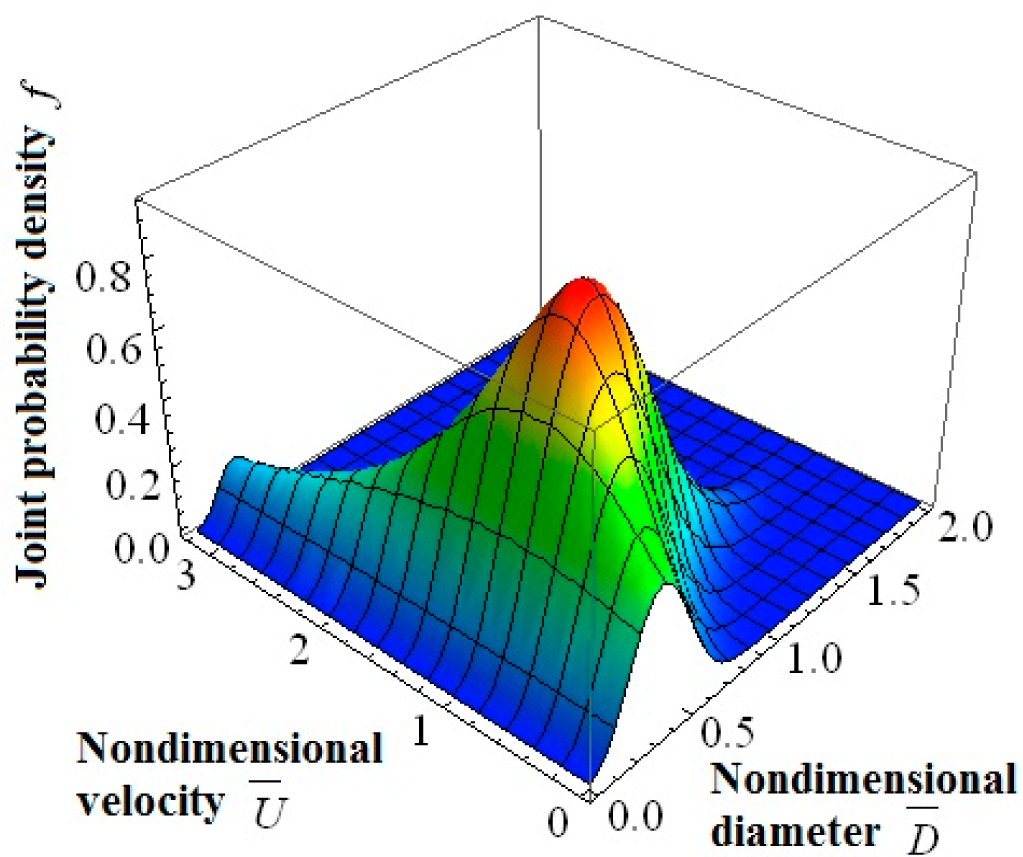
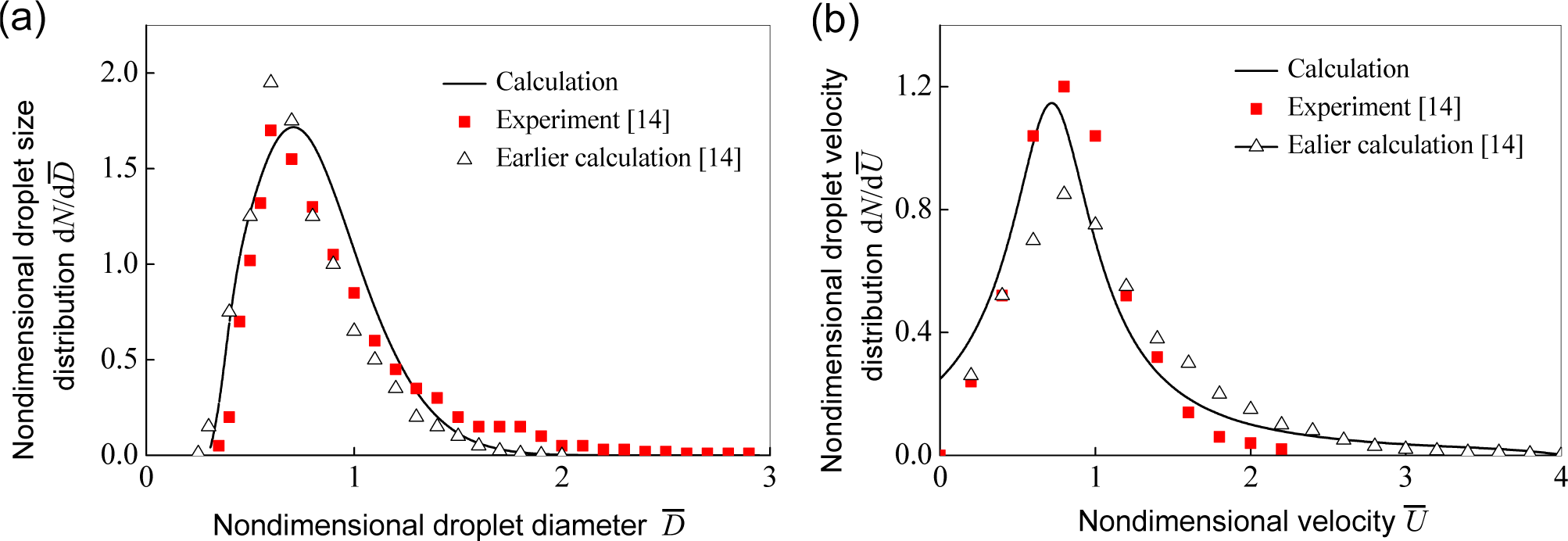


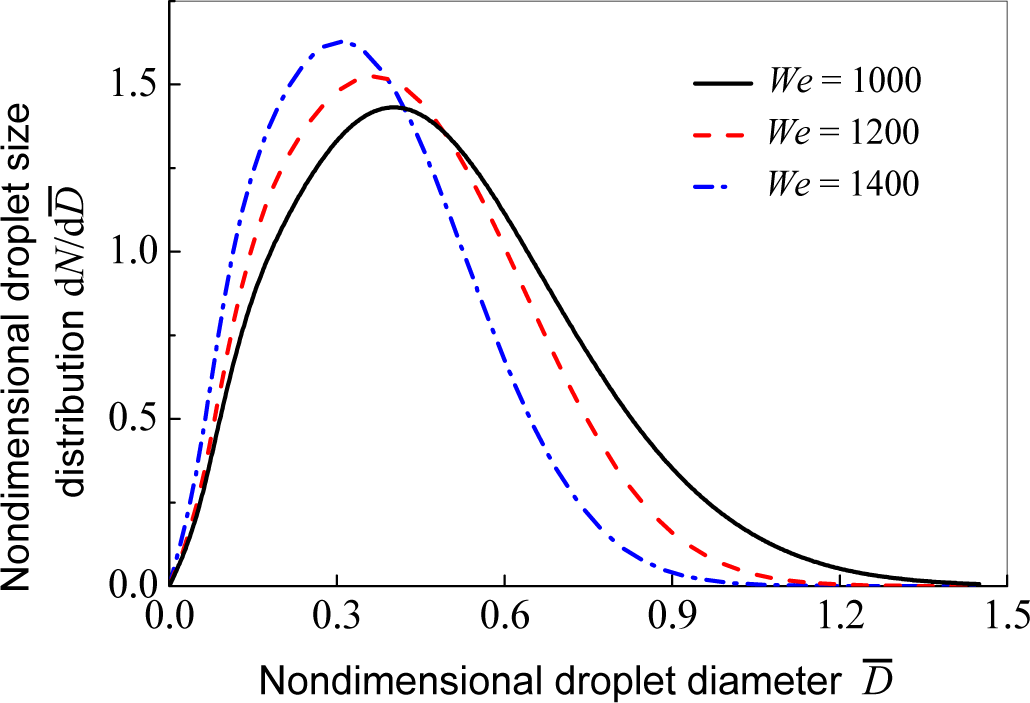

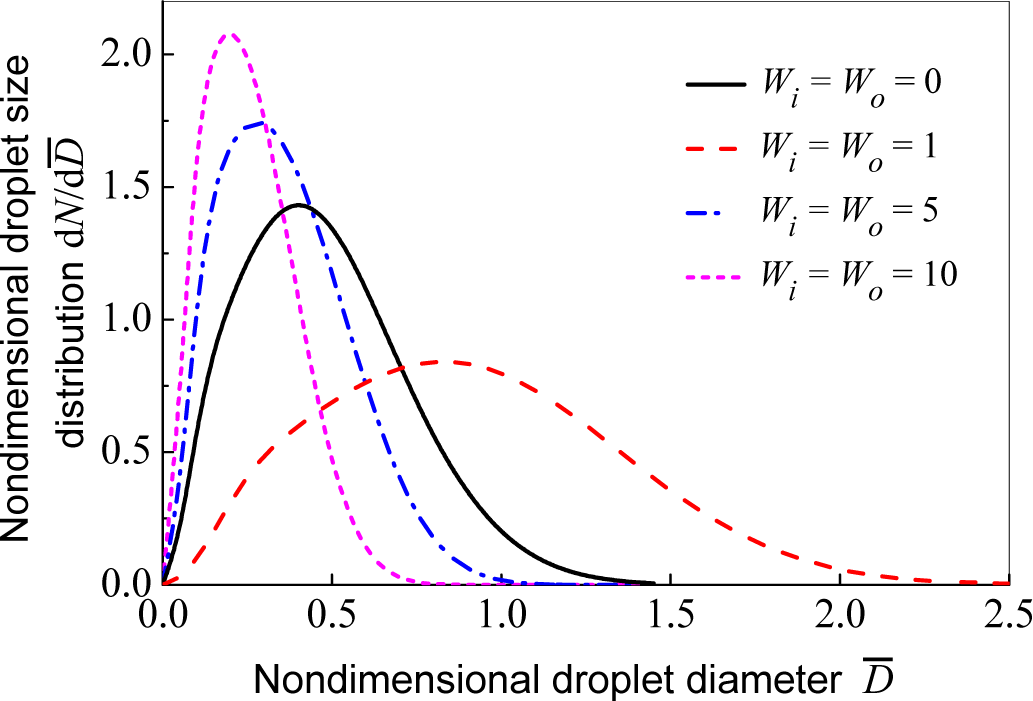
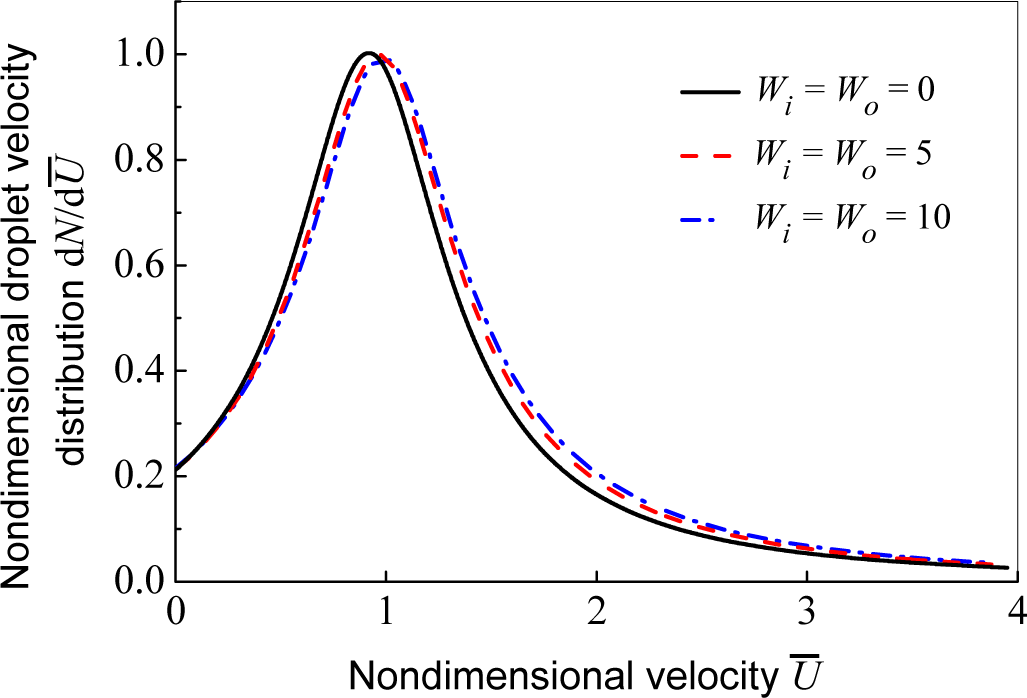


| Dimensionless liquid swirling strength | 0 | 0.01 | 0.02 | 0.03 | 0.04 | 0.05 |
| Dimensionless breakup length | 393 | 340 | 105 | 56 | 41 | 22 |
| Results | Droplet size distribution | Droplet velocity distribution | ||
|---|---|---|---|---|
| Calculation | Experiment | Calculation | Experiment | |
| Nondimensional droplet diameter corresponds to peak value | 0.7 | 0.6 | 0.72 | 0.8 |
| Mean value | 0.78 | 0.72 | 0.76 | 0.84 |
| Standard deviation | 0.51 | 0.54 | 0.55 | 0.52 |
© 2015 by the authors; licensee MDPI, Basel, Switzerland This article is an open access article distributed under the terms and conditions of the Creative Commons Attribution license (http://creativecommons.org/licenses/by/4.0/).
Share and Cite
Yan, K.; Ning, Z.; Lü, M.; Sun, C. Study on Droplet Size and Velocity Distributions of a Pressure Swirl Atomizer Based on the Maximum Entropy Formalism. Entropy 2015, 17, 580-593. https://doi.org/10.3390/e17020580
Yan K, Ning Z, Lü M, Sun C. Study on Droplet Size and Velocity Distributions of a Pressure Swirl Atomizer Based on the Maximum Entropy Formalism. Entropy. 2015; 17(2):580-593. https://doi.org/10.3390/e17020580
Chicago/Turabian StyleYan, Kai, Zhi Ning, Ming Lü, and Chunhua Sun. 2015. "Study on Droplet Size and Velocity Distributions of a Pressure Swirl Atomizer Based on the Maximum Entropy Formalism" Entropy 17, no. 2: 580-593. https://doi.org/10.3390/e17020580
APA StyleYan, K., Ning, Z., Lü, M., & Sun, C. (2015). Study on Droplet Size and Velocity Distributions of a Pressure Swirl Atomizer Based on the Maximum Entropy Formalism. Entropy, 17(2), 580-593. https://doi.org/10.3390/e17020580




